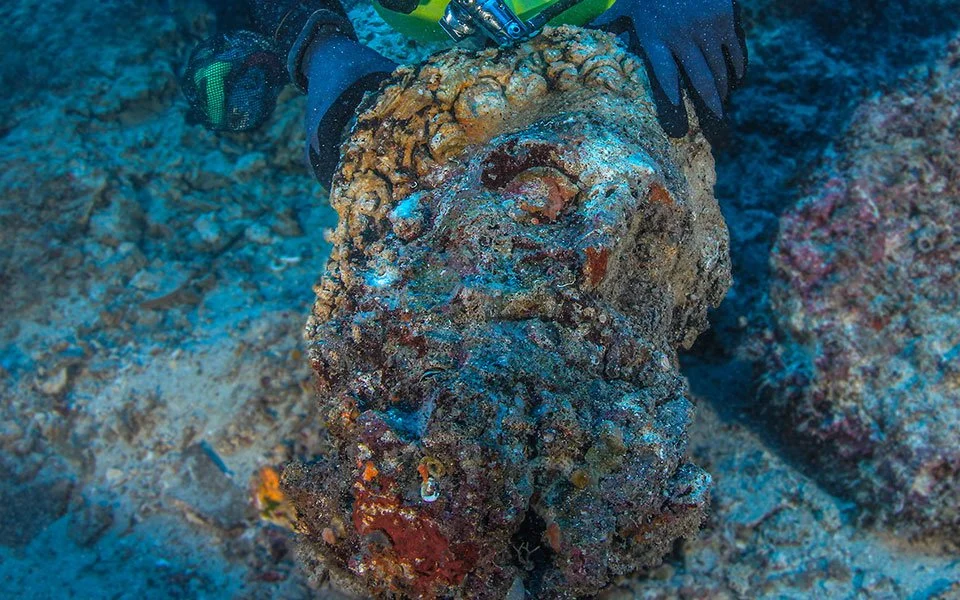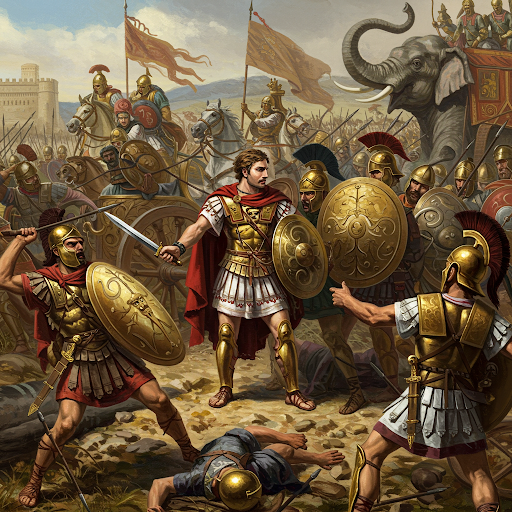Rich archaeological area 50 metres under sea off Antikythera gives up yet more treasures after boulders removed
For archaeologists, it’s the underwater find that keeps on giving. A Roman-era cargo ship, discovered by chance off the Greek island of Antikythera more than 120 years ago and regarded as the world’s richest ancient shipwreck, has yielded yet more treasures in the most recent explorations of it, including the missing head of a statue of the demigod Hercules.
“In 1900, [sponge divers] pulled out the statue of Hercules [from the sea] and now in all probably we’ve found its head,” said Prof Lorenz Baumer, the classical archaeologist who is overseeing the underwater mission with the University of Geneva.
“It’s a most impressive marble piece,” he said, describing characteristics that bore all the hallmarks of one of the great heroic figures of Greek and Roman mythology. “It is twice lifesize, has a big beard, a very particular face and short hair. There is no doubt it is Hercules.”
The head features short curled hair and a big beard.
The discovery of the sculpture – along with the plinth of another marble statue, human teeth and parts of the ship’s equipment – had been made possible by the removal of three 8.5-tontonne boulders that had partially covered the wreck at the bottom of the sea bed.
For three weeks the research team of marine archaeologists and specially trained divers – working at depths of 50 metres – had access to an area never previously explored.
“It’s so deep they can only be down there for 30 minutes,” said Baumer. “But now we have an idea of what has been hiding under those rocks … each find helps us piece together more context in our understanding of the ship, its cargo, the crew and where they were from.”
A team of divers worked at depths of 50 metres to recover the items. Photograph: Nikos Giannoulakis/PR
The two teeth were embedded in encrusted marine deposits that had accrued on the 2,000-year-old shipwreck. Genetic and isotopic analysis of the remains could prove groundbreaking in shedding light on the people who sailed the ship.
The boat, which is thought to have sunk in a storm off the tiny island of Antikythera within the first 50 years of the first century BC, was retrieved by sponge divers in 1901. Most famous among its cargo of giant marble and bronze statues, ceramics and glassware was a mysterious geared device used to map the motions of the sun, moon and planets, which has been described by scientists as the world’s first analog computer.
Why the instrument, known as the Antikythera Mechanism, was aboard a vessel increasingly believed to be a merchant ship travelling from the eastern Mediterranean to Rome remains unknown.
Further expeditions are expected to reveal further secrets in the seabed off the tiny isle. “The ship could have gone down anywhere but, that said, every discovery puts us on the map and is exciting,” said Stratos Charchalakis, the mayor of Kythira, under whose jurisdiction the Aegean outpost falls.
“The truth is that for an island with just 30 inhabitants, the wreck has had a huge social and economic impact. It has helped keep its shops and people going.”
Prof Baumer said the team had “an idea” of what future investigations may bring.
“You never know what archaeology will deliver tomorrow, but what we do know is that the Antikythera wreck is an extremely rich site, the richest in the ancient world.”
Source: guardian











